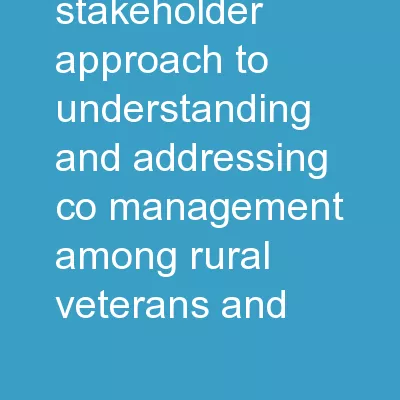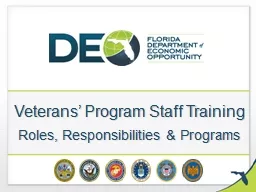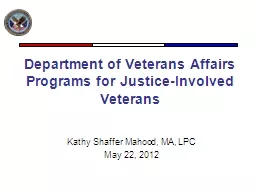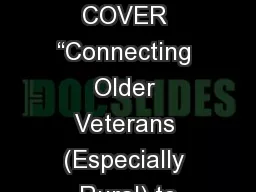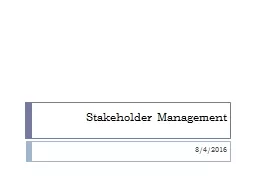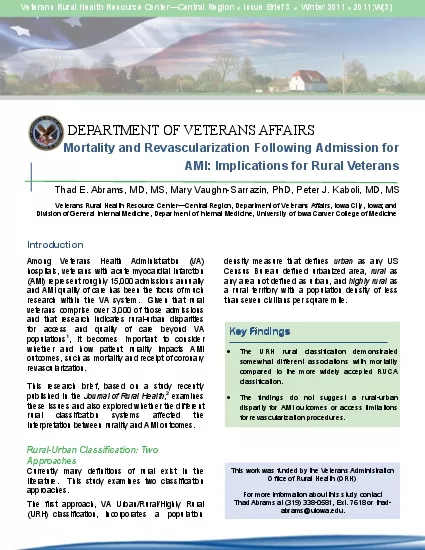PPT-A Multi-Stakeholder Approach to Understanding and Addressing Co-Management Among Rural
Author : danika-pritchard | Published Date : 2018-12-04
VA Rural Health Resource Center Central Region Iowa City VA Healthcare System Iowa City IA M Bryant Howren Mary Charlton Sarah Ono and Ashley Cozad October 11
Presentation Embed Code
Download Presentation
Download Presentation The PPT/PDF document "A Multi-Stakeholder Approach to Understa..." is the property of its rightful owner. Permission is granted to download and print the materials on this website for personal, non-commercial use only, and to display it on your personal computer provided you do not modify the materials and that you retain all copyright notices contained in the materials. By downloading content from our website, you accept the terms of this agreement.
A Multi-Stakeholder Approach to Understanding and Addressing Co-Management Among Rural: Transcript
Download Rules Of Document
"A Multi-Stakeholder Approach to Understanding and Addressing Co-Management Among Rural"The content belongs to its owner. You may download and print it for personal use, without modification, and keep all copyright notices. By downloading, you agree to these terms.
Related Documents

